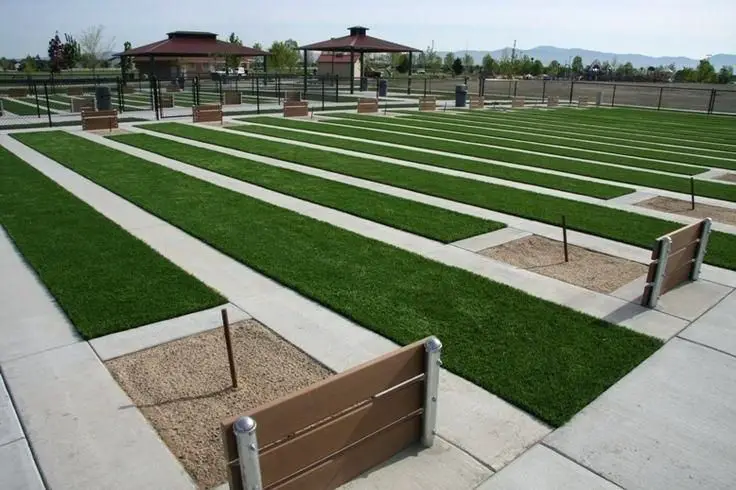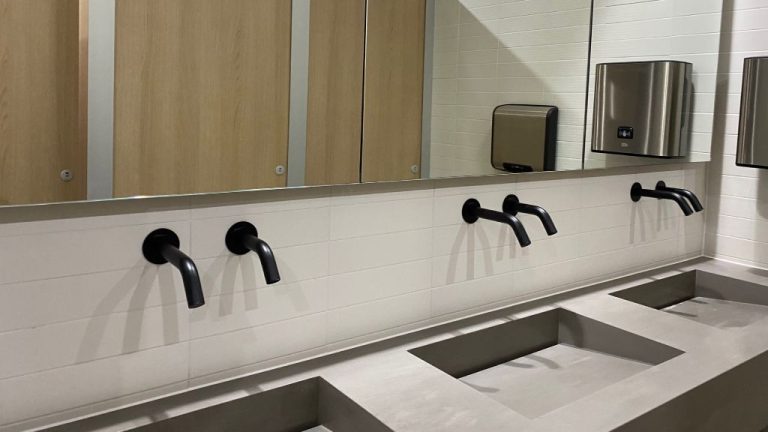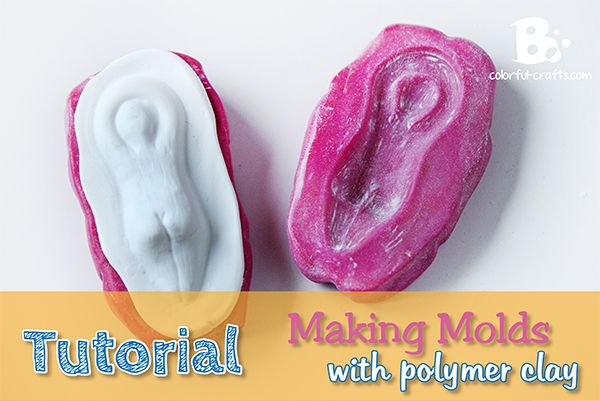What Is The Official Size Of A Horseshoe Pit?
Horseshoe pitching is a classic lawn game that has been enjoyed for centuries. The game involves players taking turns pitching horseshoes towards a metal stake planted in the ground. The objective is to ring the stake by getting the horseshoe as close to it as possible. Horseshoe pits, areas designated for playing the game, have been a staple of parks, picnic areas, campgrounds and backyards for generations.
The origins of horseshoe pitching are said to date back to Roman soldiers who threw horseshoes at stakes for entertainment and relaxation. The game rose to popularity in England and eventually made its way to America with the first settlers. The earliest horseshoe pits were simply areas cleared of grass with stakes pounded into the ground. Over time, designated horseshoe courts were built with specifications for distances and materials. The game became a beloved pastime, especially in rural farming communities.
Today, horseshoe leagues and tournaments thrive across America governed by standard court dimensions and equipment regulations. The sport combines skill, strategy and a bit of luck as players perfect their tossing technique. For many, there’s nothing more nostalgic than the sound of horseshoes clinking on metal stakes accompanied by playful banter between friends and family.
Standard Court Specifications
The official dimensions and layout for a regulation horseshoe court are determined by the National Horseshoe Pitchers Association (NHPA) and United States Horseshoe Pitchers Association (USPA). According to the NHPA, here are the standard specifications:
The horseshoe court pitching platform is 48 feet long x 4 feet wide, with a minimum 3 feet overhang at each end. The pitching platforms should be made of clay, soil, sand or a synthetic, with clay being the preferred material. Each pitching platform has two stakes centered 24 feet apart. The stakes are 14 inches tall, 1 inch in diameter, and spaced 12 inches apart. The stakes lean 11 inches out from the backboards, which are 24 inches wide.
Foul lines extend 3 feet on either side of the platforms and run parallel down the length of the court. The distance between the foul lines is 6 feet. Players must stay behind the foul line when pitching horseshoes. The standard pitching distance for men is 37 feet from the foul line to the opposite stake. For women, the pitching distance is 27 feet. For juniors, the distance is 30 feet.
According to one source, “The official horseshoe court dimensions and layout allow two players (or two teams of two players each) to play the game efficiently and competitively” (https://worstroom.com/horseshoe-pit-dimensions/)
Pitching Platform
The pitching platform is the area where players stand to pitch horseshoes. According to the National Horseshoe Pitchers Association (NHPA) official specifications, the pitching platform should be 6 feet wide and 4 feet long. It is centered on the foul line, with 2 feet extending on each side of the foul line.
The pitching platform surface should be made of clay, dirt, or carpet-like artificial surface. This provides good traction and avoids slippage when pitching. The optimal width of the pitching platform is 18-20.5 inches according to NHPA guidelines (NHPA). The length and exact placement may vary slightly based on player preference and comfort.
Construction of a high-quality pitching platform is crucial for accurate pitching and preventing injury. The surface should be level, flush with the court, and free of holes or uneven terrain that could cause tripping or ankle injuries. Regular maintenance such as raking and tamping down the clay surface helps maintain proper pitching conditions.
Stakes
The stakes that hold the horseshoes play an important role in establishing the official dimensions of a regulation horseshoe pit. According to the National Horseshoe Pitchers Association (NHPA), each stake should be placed in the center of a “pit” measuring between 43 and 72 inches long and between 31 and 36 inches wide Court Construction – NHPA. The stakes themselves should be made of metal and stand 14 inches above the top of the pit platform. They should be spaced 40 feet apart from each other along the length of the pit.
In terms of setback, the stakes must be centered within the 6-foot width of the court, with 3 feet of space from the front of the stake to the front edge of the pit platform. Proper spacing and setback ensure that players can stand an equal distance from the stakes when pitching horseshoes.
Foul Lines
The foul line is a key component in establishing the official pitching distance in a horseshoe pit. As defined by the National Horseshoe Pitchers Association (NHPA) rules, the foul line is marked 3 feet in front of each stake, perpendicular to the length of the court. This creates a pitching distance of 37 feet between the foul lines for men’s divisions.
The purpose of the foul line is to standardize the pitching distance for competitive play. Pitchers must stay behind the foul line when releasing the horseshoe. A horseshoe that is tossed from in front of the foul line is considered a foul throw and does not count for points. The foul line ensures equity and consistency in pitching distance between competitors.
For other divisions such as women’s, junior’s, and elder’s, the foul line may be marked closer to the stakes, typically at 27 feet, to accommodate shorter pitching distances. However the 37 feet foul line distance is considered the official standard.

Proper placement and marking of the foul lines is critical for fair play during horseshoe matches. The lines must be clearly visible and perpendicular to the court. Accurately measuring and laying out the foul lines is an important step in constructing regulation horseshoe pits.
Pitching Distance
The official pitching distance for a regulation horseshoe pit is 40 feet according to the National Horseshoe Pitchers Association (NHPA) Learn How To Be Prepared for the crash day – Expert Answers. This distance is measured from the back of the pitcher’s box to the center stake. Minor variations in pitching distance are allowed as long as they are within reasonable tolerance.
For sanctioned NHPA tournaments, the official pitching distance must be between 37 and 43 feet. Most recreational horseshoe pits have a pitching distance between 35-45 feet. As long as both pitching platforms are the same distance from the stake, small variations in distance are acceptable.
Having a consistent and official pitching distance is important for fair gameplay. Players learn to calibrate their throws to a certain distance. Significant variations in distance between pits or tournaments can negatively impact a pitcher’s performance.
Equipment Standards
Horseshoes must meet certain regulations for weight and dimensions to be used in official competition. The most common standards are:
-
Shoe Dimensions – The maximum length of a regulation horseshoe must not exceed 7 inches. The width of the shoe cannot exceed 7-1/4 inches.
-
Shoe Weight – For men’s competition, regulation horseshoes must weigh no less than 2 pounds and no more than 2 pounds and 6 ounces. For women’s and junior’s competition, horseshoes must weigh no less than 1 pound 10 ounces, and no more than 2 pounds 2 ounces.
-
Design – Horseshoes can be made of steel or other sturdy materials. They must be of uniform thickness and not contain any devices such as springs or flippers. Some allowance is made for normal wear and manufacturer’s defects.
Using properly weighted and sized horseshoes ensures fairness in competition and tests the skill of each player. Minor variations in equipment can make a big difference at the professional level.
Scoring
The primary objective in a game of horseshoes is to score points by tossing horseshoes as close as possible to a stake planted in the ground. There are standard rules for scoring points during gameplay:
A ringer, which is when a horseshoe encircles the stake, is worth 3 points. Ringers must be confirmed before any points are officially scored. If an opponent’s shoe is considered a ringer, that opponent will receive those 3 points. A ringer by each opponent cancels the points out.
A horseshoe that is within 6 inches of the stake is called a shoe and is worth 1 point. Like ringers, points for shoes are only scored after all horseshoes in an inning have been pitched. If opponents each have a shoe within 6 inches, those points cancel out.
A leaner, which is when a horseshoe leans against the stake, is also worth 3 points. However, leaners do not cancel out opponent’s ringers. For example, if one player has a ringer and another has a leaner, they both get 3 points.
The pitcher must be within the pitcher’s box when releasing the horseshoe. Violations result in the pitch being disqualified and no points awarded. Fouls also give the opponent the next pitch.
Games are played until one player reaches 40 points. However, the winning player must be ahead by at least 2 points. Additional innings are played until the 2-point margin is achieved.
Sanitation and Maintenance
Proper sanitation and maintenance of a horseshoe pit is critical for safe play and preventing injuries. Here are some best practices for keeping your horseshoe pit clean and well-maintained:
The pit material should be raked and leveled before each game. Rake out debris, fill any holes or low spots, and create a smooth, consistent surface (Court Material). Moisture content is also important – the material should be damp but not muddy or waterlogged.
Pits should be regularly treated with a sanitizing agent like lime or bleach to prevent buildup of bacteria and odor ( Court Maintenance). Allow time for any chemicals to fully dissipate before play.
Inspect the stakes before each game. Replace any stakes that are heavily worn, split or warped. Stakes should be plumb, firmly set, and extend 14-15 inches above the pit surface (Court Construction).
The foul line should be clearly marked and recoated as needed. Repair any uneven spots along the pitching platform.
During play, keep a rake nearby to smooth out any divots or marks in the pit material. At the end of play, rake the entire area flat and remove any horseshoes or other debris.
For outdoor pits, ensure proper drainage so water does not accumulate. Covering the pit between uses will help keep it clean and consistent.
Conclusion
In summary, the official dimensions and regulations for a horseshoe pit are as follows:
The playing area is 6 feet wide by 46 feet long, with an additional 2 feet at each end for a total court length of 50 feet. Each pitching platform is 6 feet square, with a clay or dirt surface. The stakes are 1 inch diameter, 14-15 inches above the pitching platform, and spaced 40 feet apart from their centers. Foul lines extend from the face of the stake through the platform edges perpendicular to the length of the court. The pitching distance is 37-43 feet for men, 30-37 feet for women, and half those distances for children and seniors. Players alternate turns pitching 2 horseshoes per inning trying to encircle the stake for points. Games often go to 50 points.
Proper maintenance of the court surface and periodic replacement of equipment is important for fair gameplay and sanitation. Following the official dimensions and rules helps ensure fair competition across different venues.




